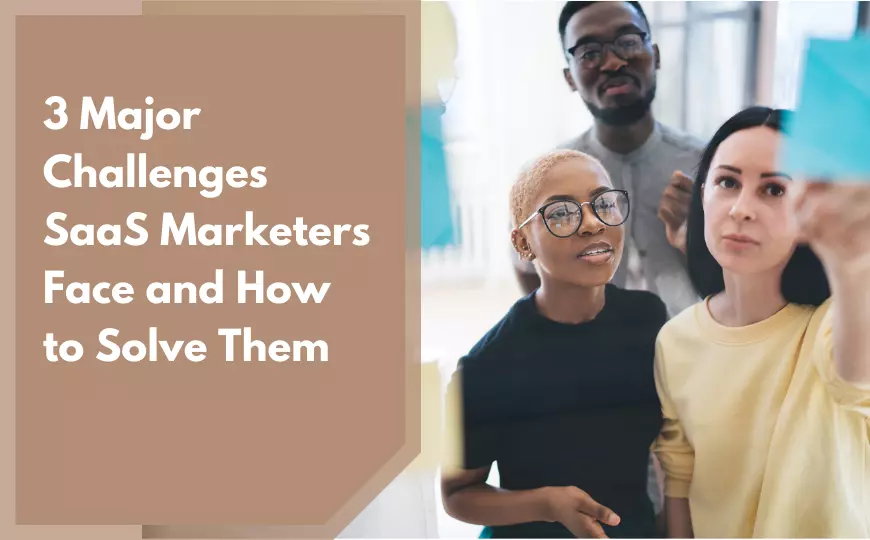Software as a Service, also simply known as SaaS, is a software delivery model that has become more and more popular. This is partly because of the subscription mode of payment that gives customers some control on how and when to use the software.
Due to increasing demand for SaaS applications, the SaaS sector is projected to grow to the value of $623 billion by 2023, according to a 2019 market research report by Markets and Markets. Additionally, this growth will be fueled by organizations’ push for automated and agile processes.
Preparation to capture this addressable market requires getting the SaaS marketing just right. Because of the different operating model of the SaaS sector, there are unique challenges in marketing. Solving these challenges are key to ensuring that SaaS companies can convince customers to license their software solutions, generating large enough revenues, to operate profitably.
Challenges and Solutions
The main challenges of marketing SaaS businesses arise from the fact that SaaS is intangible. You’re selling an ‘invisible’ product into a marketplace with a highly competitive landscape, a short-sales-cycles, and where getting to the prospect first can mean the difference between securing a customer or seeing them go to one of your competitors. All these factors mean that SaaS requires a different approach from conventional strategies.
SaaS marketers will encounter challenges, but there are solutions you can adopt to overcome these limitations.
Challenge 1: Resistance to Change
You might be trying to sell to a customer that already uses a particular software product and changing to a new service needs convincing. Is your software going to boost their productivity? Is it a cheaper option? What exactly is different from what they are currently using? If you are not able to answer these questions, you’ll not be able to close the sale.
There may be a segment of the marketplace that has low adoption rates for any SaaS products. You may think that this group will be easier to convince, but it’s easier said than done. Some prospects may claim that SaaS is more expensive over the long run versus single payment licensing or may have implementation concerns compared to their on-premises systems.
Prospective customers may also cite security concerns, integration challenges, and lack of customization on SaaS products. Overall, whether you’re trying to sell to a customer with experience using related products or one relying on internal on-premises platforms, if prospects don’t find value in your product, they will not buy.
Solution
Aim to provide value to customers. This may necessitate the marketing team to adopt new ways of marketing the features of the software and explaining to prospective buyers how these features will help them achieve their business goals.
Free trials have proven to be successful in onboarding new customers. SaaS companies have the option to adopt diverse trial models, depending on what they are trying to achieve and their target customers. The models include completely free trial for a set period, trial-to-paid, freemium model, trial with no credit card information, trial with credit card information, and free limited version.
According to Neil Patel, free trial options are a requisite marketing strategy because it provides customers with an opportunity to test your products. It is also an opportunity for providers to prove to customers that the product will indeed meet their needs.
Challenge 2: Maintaining Current Customers
As you seek to widen your market and bring in more customers, your current customers are also exposed to modern technologies that promise to offer better services. As more software products continue to be launched, offering emerging innovative technology that your products have not yet incorporated, it is easy to lose your customers. According to the 2020 SaaS Annual Trends by Blissfully, companies churn through 30 percent of their applications yearly.
Solution
The solution is to build a good relationship with existing customers. Customers should be free to suggest any improvements or new features they’d like to see added on the product. When customers inquire about non-existing functions or features, it indicates a gap between customers’ expectations and what your product offers. If customer needs are met by the existing software products, there is less likelihood of them migrating to another service.
Companies should build rapport with their customers to identify these gaps and plan to fill them. These gaps can be filled by adding new features on the product, building a supplementary product, or simply updating the software.
Challenge 3: Focusing on the Product and Forgetting the Service
SaaS means software as a service. Many providers focus on selling the software and forget the service part. By neglecting the service part and heavily investing on the product, you run the risk of losing the human connection. These products are used by humans, and targeted servicing is imperative.
Solution
Programmers or developers are crucial in the development of the software products. But once it’s launched and ready to be used, the company’s service team members also play a vital role in selling the product. These service members include marketers, sales, customer service, help desk, tech support and more.
By promoting your services, you’ll have more success selling SaaS. Users will understand that they’re not just buying the software, they’re also getting customer support, automatic updates, free content about the product from their blogs, and any other complementary services offered by the company.
Conclusion
Adopting effective marketing strategies will minimize the unique challenges faced by SaaS marketers. Overall, strategies that have proven to be successful in SaaS marketing include flexible and attractive pricing models that deliver the right features-to-benefits ratio your buyers are seeking. Offering prospective customers freemium or premium trials that let them test if the applications meet their specific needs is a great way to jumpstart the buyer journey leading to monthly recurring revenues. Lastly, keeping in mind the importance of the services component of the SaaS model, from phone support, blogs, published FAQs, Webinars, Live Chat, users’ groups and well-resourced support publications not only helps you find new customers but also keeps your current customers happy and loyal and likely to share their positive experiences with others.






